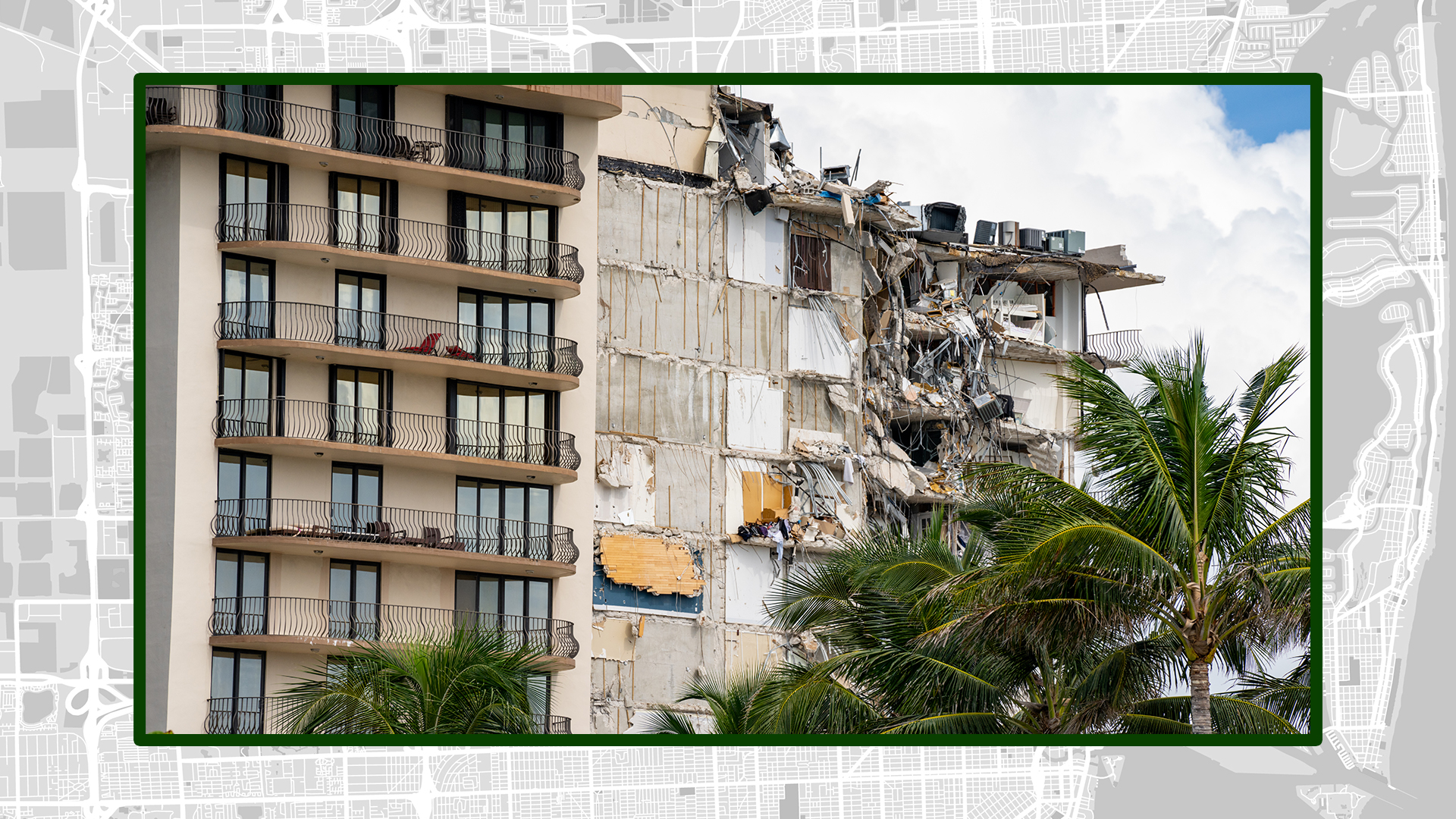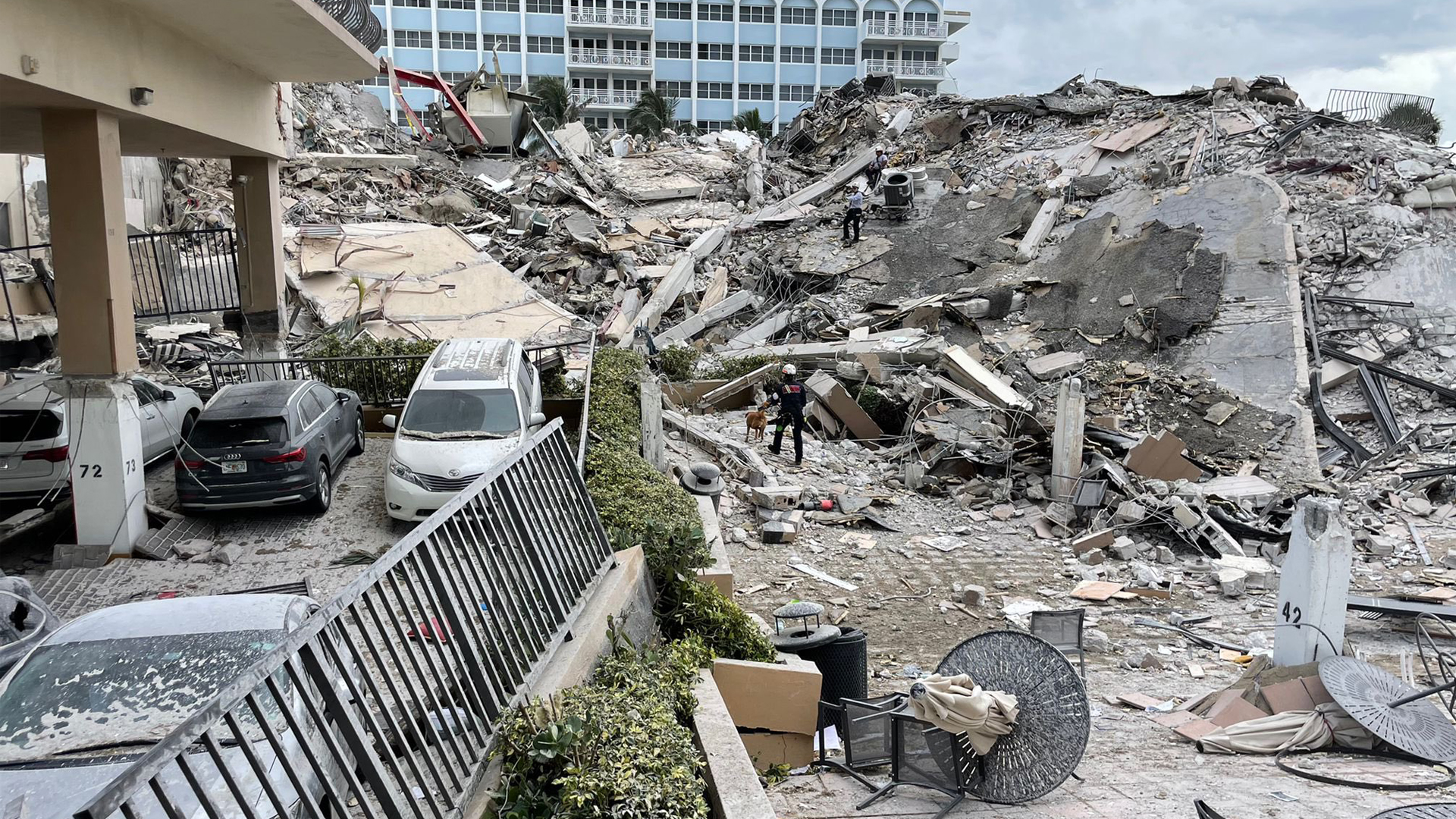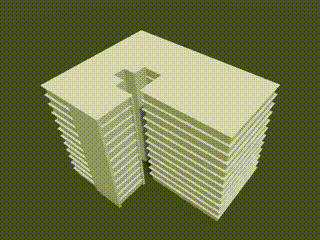
The Champlain Towers South collapse on 24 June was a tragedy of epic proportions, with 98 confirmed dead and many more unaccounted for. While the victims and their families have suffered immeasurably, appraisers will be called upon to provide measurements of their property losses – measurements to be used by insurers, attorneys, journalists, heirs and executors, and potential purchasers of the site.
At the time they were built, the condos in Champlain Towers were selling for less than $200,000. By June 2021, condo units in the complex were selling for $355,000 to $615,000. These were solidly middle-income housing stock in a hot Miami economy where this demographic is mostly priced out. For context, condos in the adjacent building, the 1994-built Champlain Towers East, were selling for over $1m earlier this year. The loss to the community of these affordable units will not likely be mitigated by its replacement.
The 12-storey, 136-unit, poured-in-place concrete condominium tower was built in 1980/81 on reclaimed wetlands near Miami, Florida along one of America’s most attractive shorelines. Nathan Reiber developed Champlain Towers North and South and was awarded a key to the city in 1986. In conceiving his project, Reiber would have underwritten its feasibility using all of the applicable valuation methods: sales comparison, cost, and income capitalisation approaches.
At different stages of the life of this site, real property appraisers would have had to develop opinions of value and one or the other of the approaches would have been most suitable. The collapse of the structure and its return to raw land expose vulnerabilities in traditional appraisal approaches that should be addressed by appraisers as well as their clients. This would ensure the numbers are valid and useful, that expectations are clearly articulated and met, and that valuer responsibility is clear.
We explore these methods in the context of Champlain Towers to bring light to valuation issues.
Getting started
The value of the raw land that formed the idyllic site for this Moderne-style structure would have been determined by several factors. These include: zoning, its natural features (such as ocean views), the income potential of the proposed development given the features of its residences and the proposed amenity set, the cost of construction, conditional financing, and the demand of the local buyer pool for the units.
Moving in
Once the condominiums were completed, a marketing plan would have been launched that most likely included a fully decorated model unit for display. They sold out. Shortly thereafter, someone (possibly a speculator) would have wanted to sell their unit. At this stage the cost approach becomes less relevant. The income approach may have some relevance if a buyer wants to be able to rent the unit out, but primarily the sales comparison approach takes precedence. What are other units selling for in the neighbourhood? How does a recently sold unit in this complex compare?
Baked into the sale price of the unit would be the amenities, its physical depreciation, affordability of the cost of ownership and other factors. A buyer package provided at the time of escrow would also include homeowner association (HOA) board meeting notes and the condition of the building’s finances.

Property depreciation is real
Fast forward from 1981 to 2021. In that time several of the original factors that combined to help estimate value have changed dramatically. Maintenance has been done or deferred; HOA dues and assessments may or may not cover actual costs; meeting notes and building budgets may have accumulated conflicts and inaccuracies that make a true risk assessment difficult. And yet, the primary method of gauging value is the sales comparison approach. Condominium associations in Florida have routinely exploited loopholes that allow them to delay inspections, renovations, and compliance with regulations that they say are too expensive. Furthermore, condominium boards often have little regard for transparency and have been accused of fraud and kickbacks.
Can a valuer be, or even be asked to be, so familiar with the inner workings of a property as complex as this one that they can incorporate these factors accurately into their estimates? In the case of Champlain, could the appraiser understand the implications of the concrete spalling? Could they know the rebar was rusting inside that lovely, streamlined structure – a ticking time bomb of structural degradation not yet visible to the naked eye?
Comparable nearby condo towers, many built within the last 40 years, may have a clearly comparable amenity set, the same views, the same unit sizes, and the same HOA dues. But to use them as a truly representative comparable property, an appraiser would have to have access to many intangibles, would have to guess at their implications and then be able to establish an impact on value. In this case, important facts include the degree to which there were informal board discussions about repair assessments, the severity of water intrusion and the effectiveness (or not) of mitigation measures. A valuer would not have access to these crucial inner workings which have tremendous implications for their calculations.
It appears, from first reports, that the problem with Champlain Towers is that sea-level rose above the capacity of their building to disgorge it.
The more things change
Which brings us to the whale in the lifeboat. The climate – judging by the recent calamities of fire, flood, and starvation by drought – is changing faster than scientists expected. South Florida has become a bellweather for the impacts of climate change, with a deluge of real estate often sitting on pervious limestone in the nexus of hurricane country and buildings sitting at low elevations on the brink of rising seas.
It appears, from first reports, that the problem with Champlain Towers is that sea-level rose above the capacity of their building to disgorge it. While the question is legitimate, it is important not to blame in hindsight inadequate design and construction. The flood maps in existence in 1980 could not have predicted anything like the water intrusion this property experienced. There is currently no appraisal methodology to help a valuer impact their opinion of value based on climate change.

Back to the land
The tower is gone. Not surprisingly, the issues affecting valuation are now vastly more complex starting with the cost of site clearance. If the HOA insurance covers replacement, has the insurance carrier’s estimates of replacement cost kept pace with today’s spiking construction costs? And not least, the prospect of rebuilding is tinged with the recent tragedy making fraught the marketing of new units.
A reconstruction will also have to account for all the significant changes in municipal codes restricting density and design throughout Miami Beach in the last 40 years. Additionally, with the collapse providing an actual datapoint substantiating the folly of underestimating climate change, government agencies will most likely be redrafting codes as soon as the inspectors are back at their desks.
Speed to market is not going to be in the conversation for the near future as litigation piles up and heirs discuss their exit strategies. At a hearing in July, Miami-Dade circuit judge Michael Hanzman ordered that the process begin to sell the site, which, according to court records, could fetch $100m.
“This is obviously a case where there’s no amount of money that could possibly be available to compensate these families for their suffering and loss,” Hanzman said. “While there’s no money in the world that can do that, the law places value on claims, and these claims are going to have to be valued. The court has no doubt the aggregate value of the claims that the law will place on them is going to far exceed all amounts available for recovery, both by way of insurance proceeds, assets and third-party claims.”
Despite a desire to see some immediate compensation for the victims’ losses, clear title to the land will remain elusive. Attorneys may find themselves having to write law as they sort out an antique set of covenants, conditions and restrictions (CCR’s) that may not clearly define the property’s common area, who owns it, and who is responsible for it. Financing risks will likely surround this project far into an unknown future marketplace.
This is not to say the property has lost value. That will be determined by calculating today’s highest-and-best-use which may be denser or more high-end or may include other uses in addition to residential. The numbers have to be crunched, but not with the same old models. Valuers need to employ updated methodologies and be mindful of unknowns to reconcile the value of the property on 23 June with the raw land that remained after the tower collapsed on 24 June.
Financing risks will likely surround this project far into an unknown future marketplace.
Ann Gray FRICS, FAIA, is both a licensed architect and real estate broker. As principal at Gray Real Estate Advisors she consults to property owners, brokers, and land use attorneys on entitlements, development and positioning to optimise the value of complex properties. Ann is RICS president-elect.
Neil Axler MRICS is managing director at B Riley Advisory Services, based in New York. He has more than 20 years of experience working with individual assets and portfolios of large income-producing residential, commercial and industrial properties.

